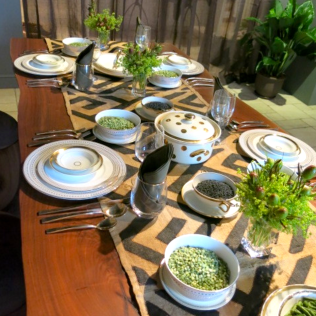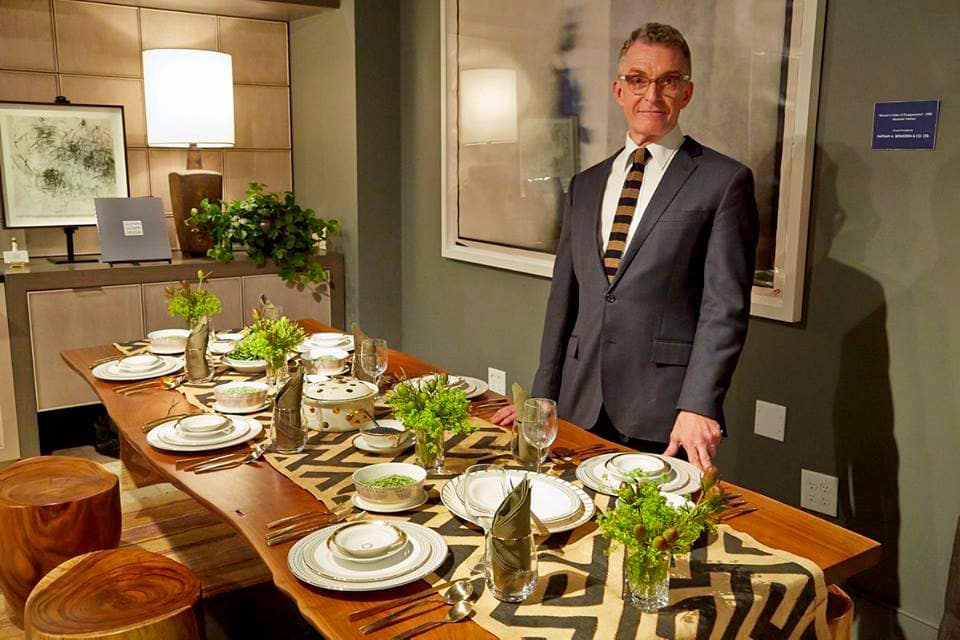I was invited to participate in the Fifth Annual ‘Art of the Table’ at the Bilotta Kitchen Showroom at the A&D Building in New York City this year. In the process of working on this project I learned that it is the 30th Anniversary of Bilotta, a family owned and run business; I dug a little deeper and came to find out that my working relationship with Bilotta is just shy of 20 years! All the while working with the same Kitchen Designer – our beloved Paula Greer. This made participating in the event all the more meaningful for me, and for them!
This year’s co-sponsor is Prouna, and we were allowed to select china from any of their patterns: I selected ‘Tapestry’, a richly patterned gold border decoration on white – a very popular combination for classic place settings.

Large sets of china get passed down from one-generation to the next – with the dishes used only once or twice per year — along with sterling flatware. But what I find is that when a table is set exclusively with the ‘good’ china, it can look staid and old fashioned. The solution? Mix it up!
Estate sales, auctions, antique stores and even yard sales can be great places to pick up ‘good’ china that people realize they don’t need or don’t want anymore; mixing up patterns, especially with bold and expressive designs, can bring some life back to the tabletop. And if you collect ‘mountains’ of the stuff, if one or two get broken or chipped along the way, c’est la vie!
I say use what you have if only once a week or even once a month – this way you have included the ‘good china’ and hopefully the dusty flatware into your life.


A typical house in America has separate rooms for the Kitchen, Dining and ‘Living’. But tell me, which room do you spend the most time in, even when you have guests?

I am almost certain your answer will be the kitchen! I think about the kitchen as the real living room – so why does it need to be white, bright with the now ubiquitous stainless steel appliances? I have begun to approach this essential and most used room as the real living room and have taken to ‘un-kitchening’ the kitchen’ by using richer colors for walls and cabinets, including lamp light, artwork, decorative objects and furniture that many people delegate to other rooms.
The “Art of the Table’ event provided me the opportunity to showcase this strategy in creating a relevant kitchen for how we live today.
.




